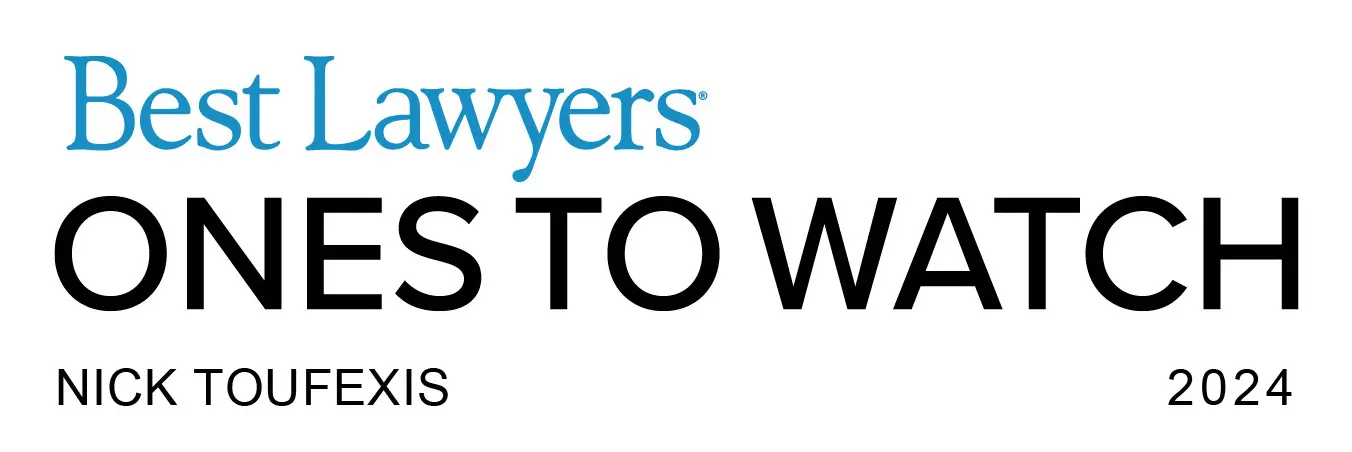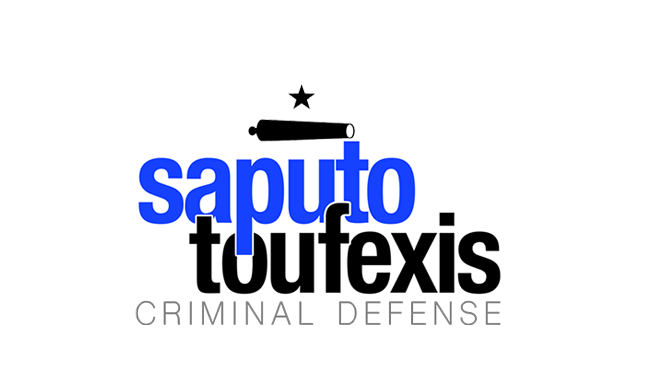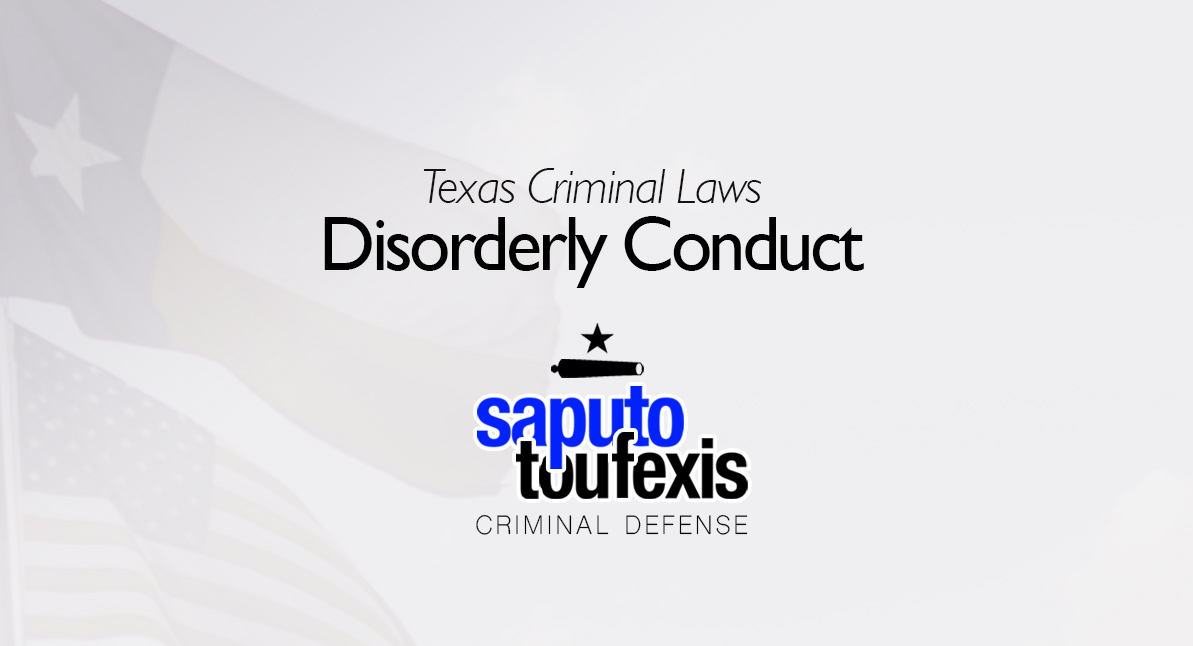The Texas Disorderly Conduct law generally prohibits actions that disturb or upset the ‘general order’ of the public.
FAQs about the
Disorderly Conduct law in Texas
- What is the current Texas law about Disorderly Conduct?
- Don’t I have a First Amendment Right to free speech?
- The only reason I had a gun out was that I was afraid for my life. Does that change the offense?
- The only reason I used threats and abusive language was that I was provoked. Can I still be charged?
- Can I keep a Disorderly Conduct arrest off my record?
- What is the statute of limitation for Disorderly Conduct in Texas?
- What is the penalty for a Texas Disorderly Conduct offense?
- Can you get probation for Disorderly Conduct in Texas?
- What level of crime is Disorderly Conduct in Texas?
The Disorderly Conduct law in Texas contains some unusually vague provisions. The statute criminalizes offensive, rude, and threatening actions. Of course, what is offensive to one person might be considered a friendly gesture to another. However, some provisions are more clear, such as the prohibition of the display of a firearm in a public place “in a manner calculated to alarm.”
Have you been charged with Disorderly Conduct? Contact us today to discuss legal representation.
or Text or Call (888) 239-9305
Prosecuting attorneys often bring Disorderly Conduct charges together with other criminal charges, such as Public Lewdness or Criminal Mischief. For example, if you ‘pick a fight’ at a bar you might be charged with both Assault and Disorderly Conduct.
The Disorderly Conduct crime also includes actions that are not violent. There are numerous exceptions to applications of the law and defenses to prosecutions that are specific to this particular offense, including an exception for Parks & Wildlife employees recently passed in 2023.
The Texas legislature codified this criminal offense in Texas Penal Code Section 42.01.
The Penal Code classifies the Texas Disorderly Conduct law under Title 9 “Offenses Against Public Order and Decency,” Chapter 42 “Disorderly Conduct and Related Offenses.” Learn more about the Texas offense of Disorderly Conduct below.
What is the current Texas law about Disorderly Conduct?
Texas law currently defines the offense of Disorderly Conduct in Penal Code Section §42.01 as follows:[1]
(a) A person commits an offense if he intentionally or knowingly:
(1) uses abusive, indecent, profane, or vulgar language in a public place, and the language by its very utterance tends to incite an immediate breach of the peace;
(2) makes an offensive gesture or display in a public place, and the gesture or display tends to incite an immediate breach of the peace;
(3) creates, by chemical means, a noxious and unreasonable odor in a public place;
(4) abuses or threatens a person in a public place in an obviously offensive manner;
(5) makes unreasonable noise in a public place other than a sport shooting range, as defined by Section 250.001, Local Government Code, or in or near a private residence that he has no right to occupy;
(6) fights with another in a public place;
(7) discharges a firearm in a public place other than a public road or a sport shooting range, as defined by Section 250.001, Local Government Code;
(8) displays a firearm or other deadly weapon in a public place in a manner calculated to alarm;
(9) discharges a firearm on or across a public road;
(10) exposes his anus or genitals in a public place and is reckless about whether another may be present who will be offended or alarmed by his act; or
(11) for a lewd or unlawful purpose:
(A) enters on the property of another and looks into a dwelling on the property through any window or other opening in the dwelling;
(B) while on the premises of a hotel or comparable establishment, looks into a guest room not the person’s own through a window or other opening in the room; or
(C) while on the premises of a public place, looks into an area such as a restroom or shower stall or changing or dressing room that is designed to provide privacy to a person using the area.
(a-1) For purposes of Subsection (a), the term “public place” includes a public school campus or the school grounds on which a public school is located.
This statute covers a lot of ground, but we break the law down into its basic parts below. Disorderly Conduct includes situations in which someone:
- Uses language that is so upsetting and vulgar that it causes public disorder. (For example, shouting ‘Fire’ in a crowded movie theater)
- Makes some sort of gesture of display that is so upsetting and vulgar that it causes public disorder (For example, lighting a smoke bomb that makes people believe there is a fire in a theater)
- Uses chemicals to make an odor that is so strong that it causes disorder (For example, a ‘stink bomb’ that a student uses to get out of class)
- Makes threats or using abusive behavior that any reasonable person would be offended by it (For example, approaching a child and threatening to kill their parents would be considered an offensive threat)
- Makes a noise so loud in a public place or private location you are not allowed in, that an average person would consider it unreasonable (For example, driving a car with a modified muffler that creates a painfully loud noise)
- Fights with someone else in public (For example, if someone were to start fighting with you at a bar, you both might be charged)
- Displays fires, or uses a gun in a threatening manner in a public place (For example, firing a gun into the air in the middle of the street)
- Exposes his or her genitals in public
- Looks into windows you are not allowed in (For example, the classic ‘peeping tom’)
Disorderly Conduct can be categorized into three distinct categories; speech, assaultive behavior, and lewd behavior.
Speech
Although the government generally cannot impeded your freedom of speech, certain types of language and communication could fall under the disorderly conduct statute. The state criminalizes speaking words or phrases that would be interpreted as abusive, indecent, profane or vulgar in a public place, if they would tend to incite an immediate “breach of the peace.” The statute also criminalizes gestures or displays or offensive behavior that would incite a “breach of the peace”.
Assaultive and Disruptive Behavior
Acts that tend to scare the public or be a nuisance are also encompassed under this statute. Fighting in a public place would constitute the elements of disorderly conduct. Discharging a weapon in public, even if it doesn’t hurt anyone could also be a criminal act if it puts another in fear. Because the bar is so low, acts such as throwing a smoke or stink bomb could also be considered disorderly conduct.
Lewd Behavior
The law was also drafted to criminalize lewd or offensive behavior not categorized as assaultive. Exposing ones genitals or anus in a reckless manner without considering who may be around to witness it and may be offended is prohibited. This is the statute that public urination falls under in Texas law. “Mooning” would also fall under this category, so long as it was not for sexual gratification, in that case it could be elevated to Indecent Exposure.
You can be charged under the lewd acts category if, “for lewd or unlawful purposes,” you enter another’s property to look into the dwelling through windows or other openings. This also applies to hotel rooms and other places intended to provide privacy such as restrooms and changing rooms.
Don’t I have a First Amendment Right to free speech?
The First Amendment guarantees the right to freedom of speech, but the courts have made some exceptions. Particular vulgar language, or language that might constitute a ‘true threat’ of danger or violence is not protected. For example, yelling ‘fire’ in a movie theater has the potential to cause serious bodily harm to the people in there and the constitution does not protect that. However, there are some sorts of comments that may seem inappropriate but are still protected. A skilled criminal defense attorney will be able to advise you on your chances of raising this defense.
The only reason I had a gun out was that I was afraid for my life. Does that change the offense?
If you had your weapon out for the purposes of self-defense, then you have a defense to a Disorderly Conduct charge.[2] You may also have a defense if you feared for your safety from a wild animal.
The only reason I used threats and abusive language was that I was provoked. Can I still be charged?
The Disorderly Conduct law provides a defense to prosecution if you can show that you were unreasonably provoked if the Disorderly Conduct charge was for making threats and using abusive language.[3] For example, if someone were to come up to you and start provoking you with exceptionally vulgar remarks, threats, or suggestions, then we may be able to successfully defend you under this charge and win a verdict of not guilty.
Amendments effective in 2023
In 2023, the Texas legislature created an exception to the application of subsection (a)(9) offenses for employees of the Parks and Wildlife Department who were acting within the scope of the employee’s authority.[4] This new exception essentially allows Parks & Wildlife employees to discharge a firearm on or across a public road if they’re doing it as part of their job.
Can I keep a Disorderly Conduct arrest off my record?
If the state’s attorneys have charged you with Disorderly Conduct, there are ways to prevent it from permanently damaging your record. If the charge remains a Class C misdemeanor, a deferred probation is a possibility, which if successfully completed would result in the dismissal or your case. These cases would then be eligible for complete record destruction through the process of expunction.
Other notes about Disorderly Conduct
The Disorderly Conduct statute specifically exempts noise arising from “space flight activities.” So, if you’re flying a space shuttle, don’t worry about breaking the law.[5]
Kids younger than 12 are exempted from some types of Disorderly Conduct when they are in school.[6]
What is the statute of limitation for Disorderly Conduct in Texas?
As a misdemeanor, Disorderly Conduct charges have a two-year limitations period.[7]
What is the penalty for a Texas Disorderly Conduct offense?
An offense under this statute is usually a Class C Misdemeanor (maximum $500 fine), except for two categories of activities involving firearms[8] that are Class B Misdemeanors (maximum six months in county jail plus a $2000 fine). Learn more about the range of punishments for Texas crimes here.
Can you get probation for Disorderly Conduct in Texas?
The Texas Code of Criminal Procedure allows both judges and juries to grant probation for Disorderly Conduct, and judges are also allowed to accept deferred adjudication plea deals.[9]
Note, however, that judges may not grant community supervision after a conviction if (1) the defendant used or exhibited a deadly weapon during the commission of the felony or immediate flight thereafter and (2) the defendant used or exhibited the deadly weapon himself or was a party to the offense and knew that a deadly weapon would be used or exhibited.[10]
What level of crime is Disorderly Conduct in Texas?
The Penal Code classifies Disorderly Conduct as either a Class C misdemeanor or Class B misdemeanor, depending on the circumstances.
Learn more about the penalty range for this offense in the section above.
Legal References:
^1. Texas Penal Code §42.01. This law is current as of 2024.^2. Texas Penal Code §42.01(e) – “It is a defense to prosecution for an offense under Subsection (a)(7) or (9) that the person who discharged the firearm had a reasonable fear of bodily injury to the person or to another by a dangerous wild animal as defined by Section 822.101, Health and Safety Code.”^3. Texas Penal Code §42.01(b) – “It is a defense to prosecution under Subsection (a)(4) that the actor had significant provocation for his abusive or threatening conduct.”^4. Texas Penal Code §42.01(e-1), as enacted by HB 3065, 88th Legislature, Section 3^5. Texas Penal Code §42.01(g) – “Noise arising from space flight activities, as defined by Section 100A.001, Civil Practice and Remedies Code, if lawfully conducted, does not constitute “unreasonable noise” for purposes of this section.”^6. Texas Penal Code §42.01(f) – “Subsections (a)(1), (2), (3), (5), and (6) do not apply to a person who, at the time the person engaged in conduct prohibited under the applicable subdivision, was a student younger than 12 years of age, and the prohibited conduct occurred at a public school campus during regular school hours.”^7. See Code of Criminal Procedure 12.02(a)^8. The two exceptions are Texas Penal Code §42.01(a)(7) (“discharges a firearm in a public place other than a public road or a sport shooting range, as defined by Section 250.001, Local Government Code”) and Texas Penal Code §42.01(a)(8) (“displays a firearm or other deadly weapon in a public place in a manner calculated to alarm”). See Texas Penal Code Section 42.01(d) – “An offense under this section is a Class C misdemeanor unless committed under Subsection (a)(7) or (a)(8), in which event it is a Class B misdemeanor.”^9. See Chapter 42, Texas Code of Criminal Procedure, Art. 42A.054, Art. 42A.056, Art. 42A.102^10. Art. 42A.054(b), Texas Code of Criminal Procedure










